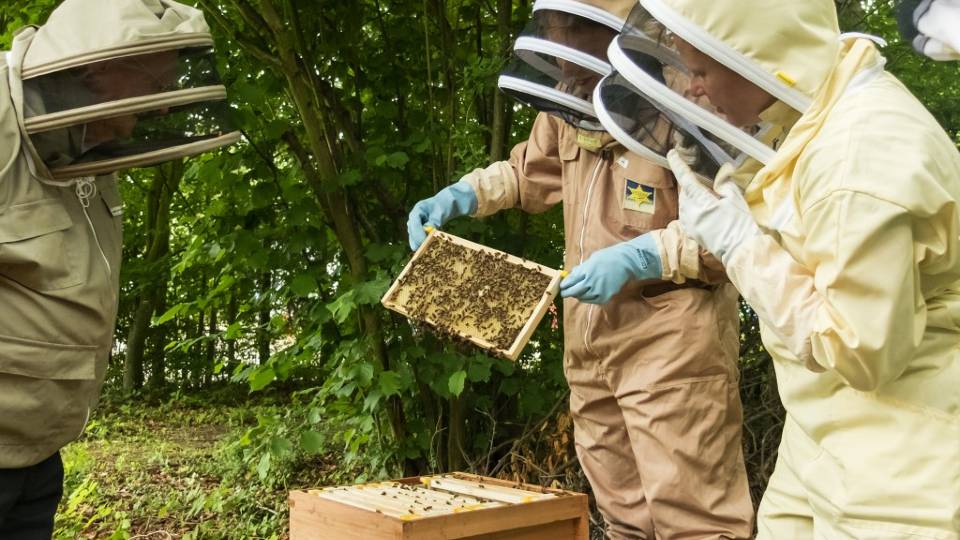Bees are a welcome inhabitant of the University campus helping to pollinate the fruit, nut trees and edible plants along the foot and cycle paths belonging to our campus Fruit Routes installation.
The University Apiary is home to between 6-10 colonies of honeybees and since 2016, our bees have created 1,700lbs of honey.
Take a look at how honey is made on campus.
Maintaining the University Apiary helps with the survival of the campus green spaces, by pollinating perennials, trees, bulbs and keeping wider species and habitats healthy. In return, the campus offers year-round forage for the bees.
In addition to the University Apiary, biodiversity work by the Gardens Team on campus includes planting wildflowers to support all pollinators, including bees, bats, moths, ants, and butterflies, and our development of managed mown areas so that they become wildflower-rich in the future.
The primary aim of the apiary is to support the declining bee populations and ensure the health and wellbeing of the bees in our care. United Nations reported that: “Close to 35 percent of invertebrate pollinators, particularly bees and butterflies, and about 17 percent of vertebrate pollinators, such as bats, face extinction globally.”
Support World Bee Day by following the below tips to make your space pollinator-friendly:
- Let your garden grow a little wild
- Make a bug hotel, these provide a perfect resting spot for solitary bees
- Avoid using pesticides, fungicides or herbicides in your garden as they can kill pollinators and poison hives
- Create a bee water station by leaving a shallow bowl of water outside and adding rocks or sticks so that the bees don’t drown
The bees support our activities in aid of the United Nations Sustainable Development Goals (SDGs):
- 11 – Sustainable cities and communities
- 12 – Responsible consumption and production
- 15 – Life on land
Find out more about our commitment to the SDGs.




